Abstract
Since the binding of drugs to plasma proteins can significantly after the intensity of pharmacological and toxicological effects of drugs, we studied the pharmacokinetics of three drugs in patients with hypoalbuminemia secondary to the nephrotic syndrome, but with relatively normal renal function. No significant differences were seen in the pharmacokinetic parameters observed for antipyrine, a drug which is less than 10% bound to plasms proteins. The percentage of unbound diphenylhydantoin, a highly plasms protein-bound drug, was found in patients with the nephrotic syndrome to be twice that of healthy individuals (19,2 vs. 10.1%, P smaller than 0.001). However, there was also a lower steady-state plasma concentration of diphenylhydantoin (2.9 plus or minus 0.6 vs. 6.8 plus or minus 0.6 mug/ml, P smaller than 0.001) secondary to an increase in the plasms clearance (0.048 plus or minus 0.019 vs. 0.022 plus or minus 0.006 liter/kg.h, P smaller than 0.001) in the nephrotic patients. The net effect is no difference in the absolute concentration of unbound diphenylhydantoin in healthy individuals (0.69 plus or minus 0.05 mug/ml) and patients with the nephrotic syndrome (0.59 plus or minus 0.06 mug/ml). Qualitatively, similar differences were observed with clofibrate. The dose of these drugs need not be routinely reduced in patients with the nephrotic syndrome as long as they have reasonably normal renal function (creatinine clearance greater than 50 ml/min). With all highly bound acidic drugs, knowledge of the concentration of unbound drug is essential to the proper interpretation of total blood levels and subsequent treatment of the patient.
Full text
PDF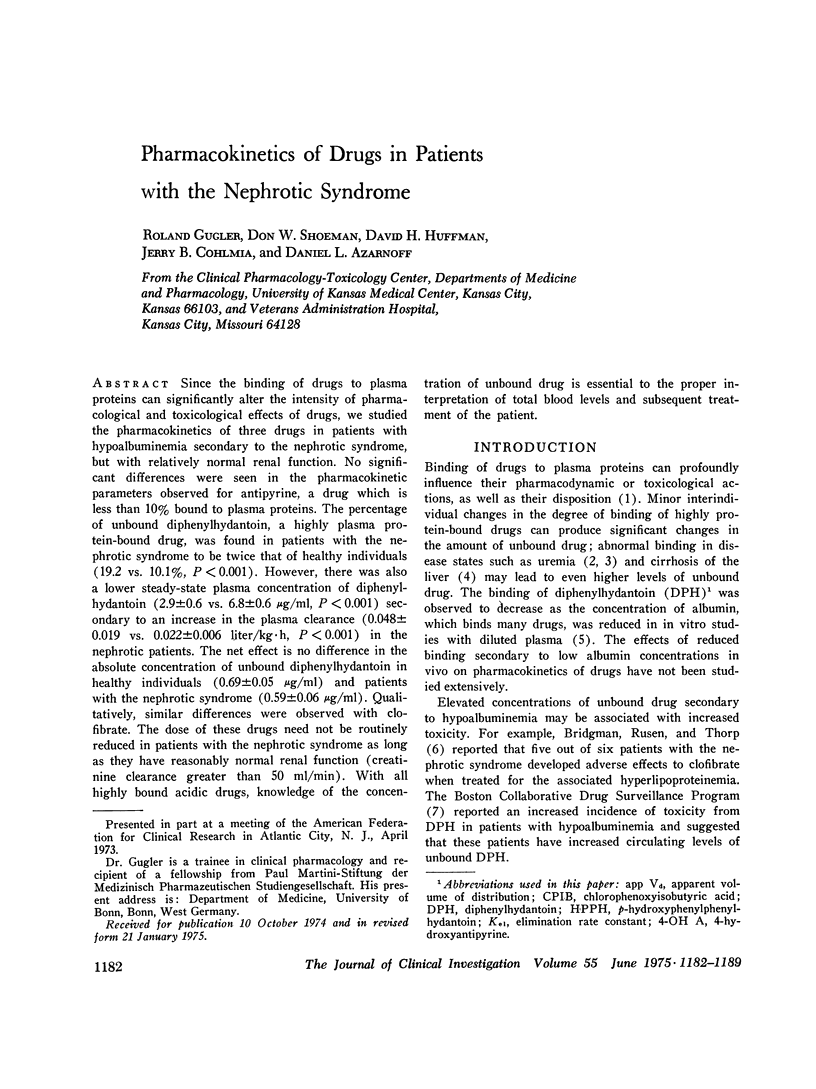
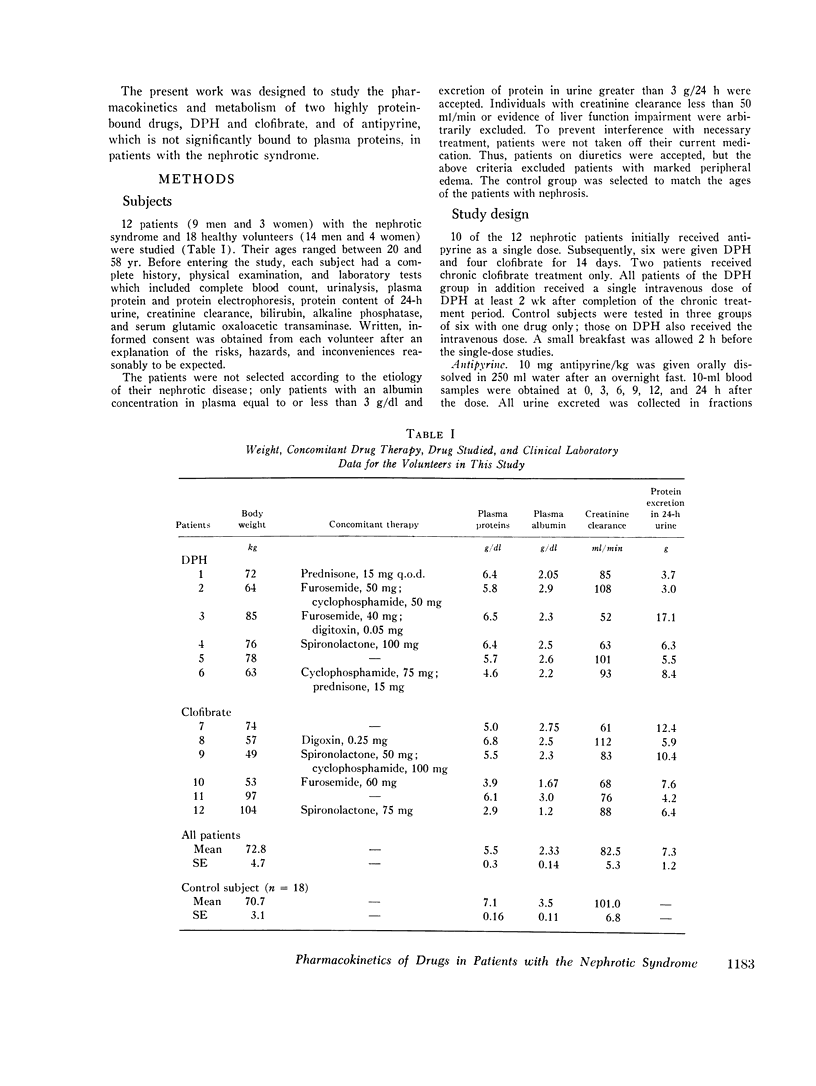
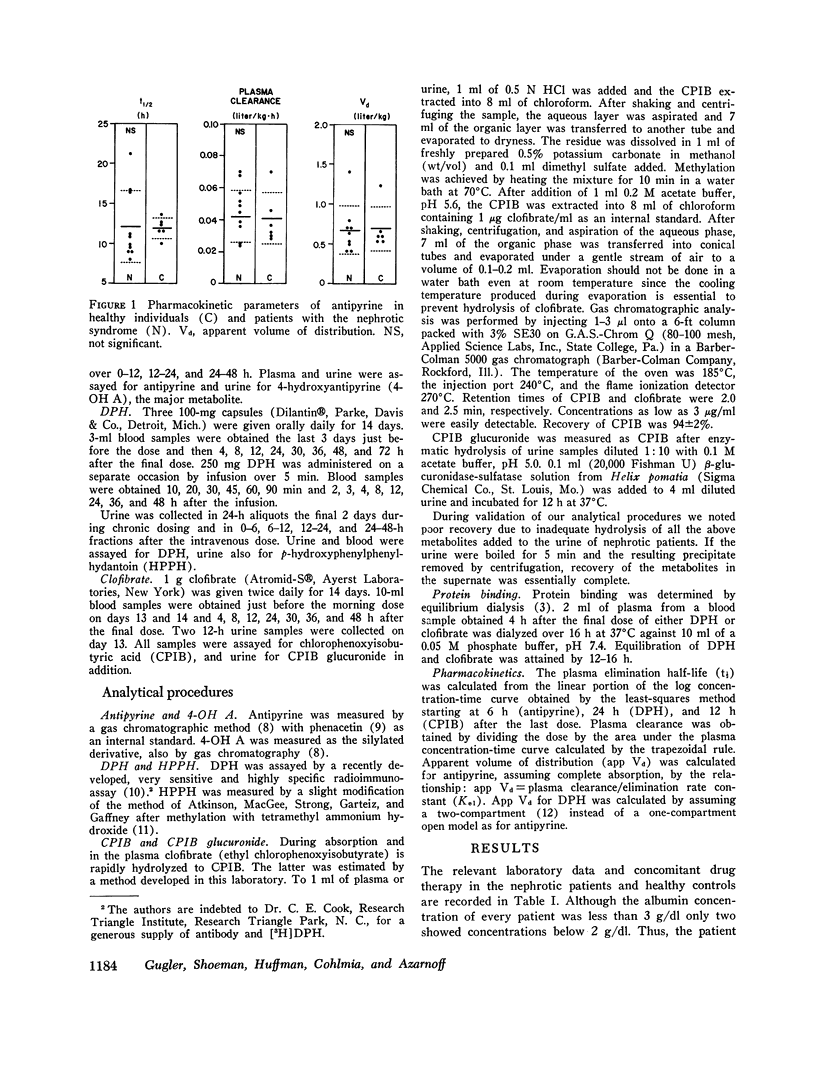
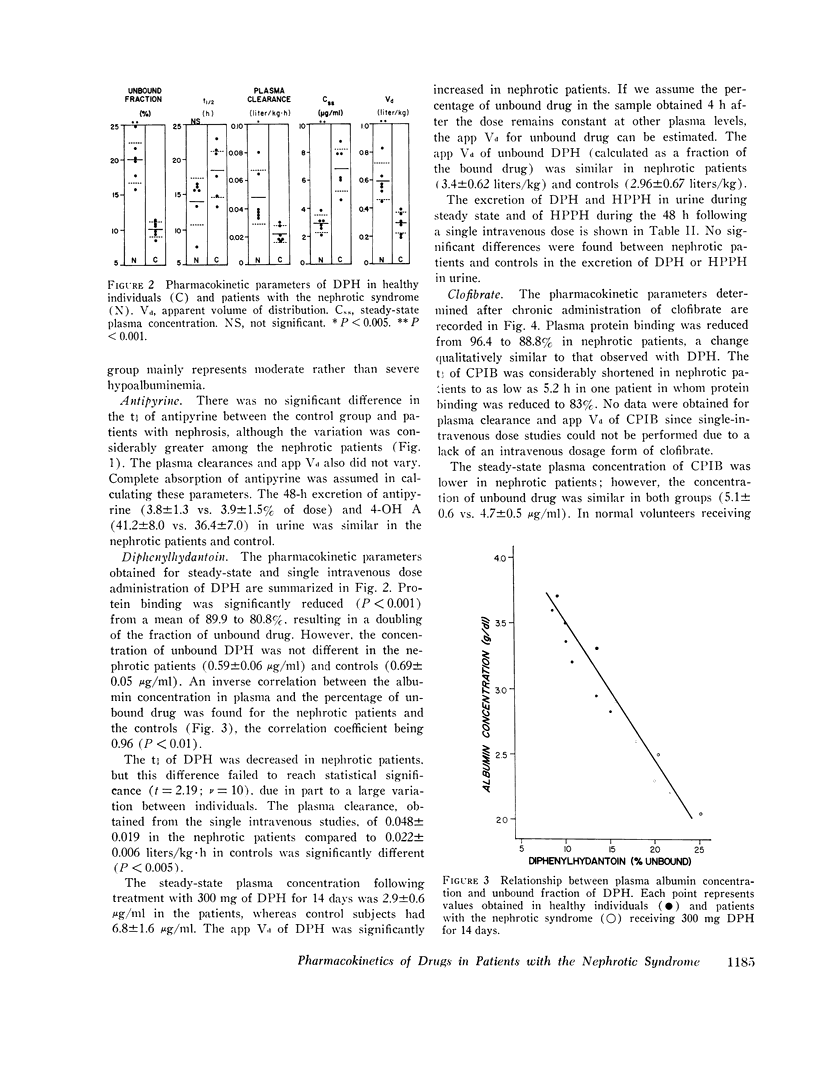
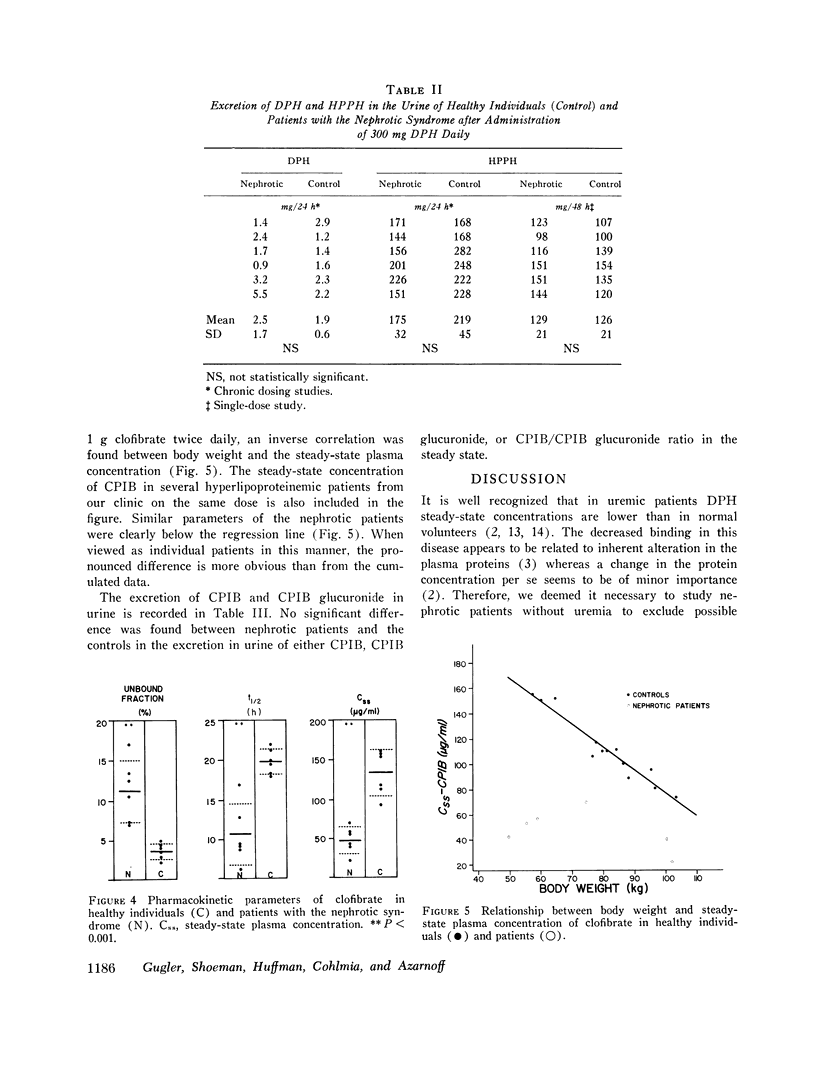
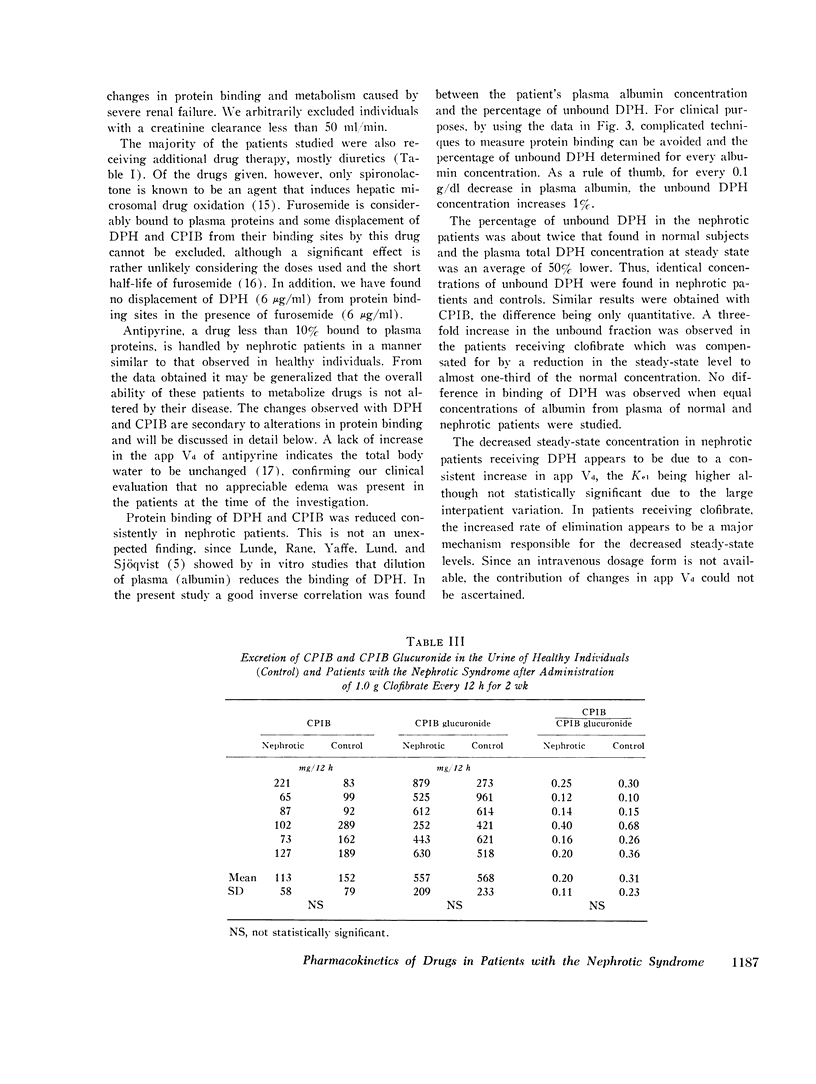
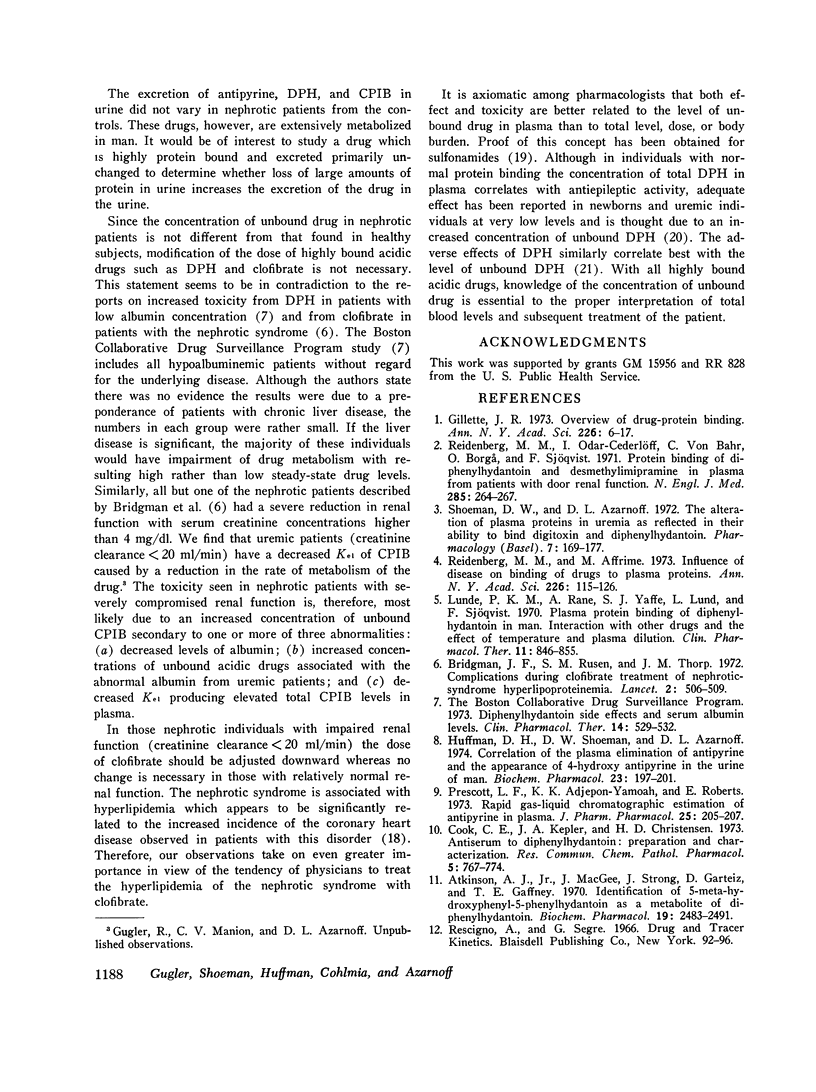
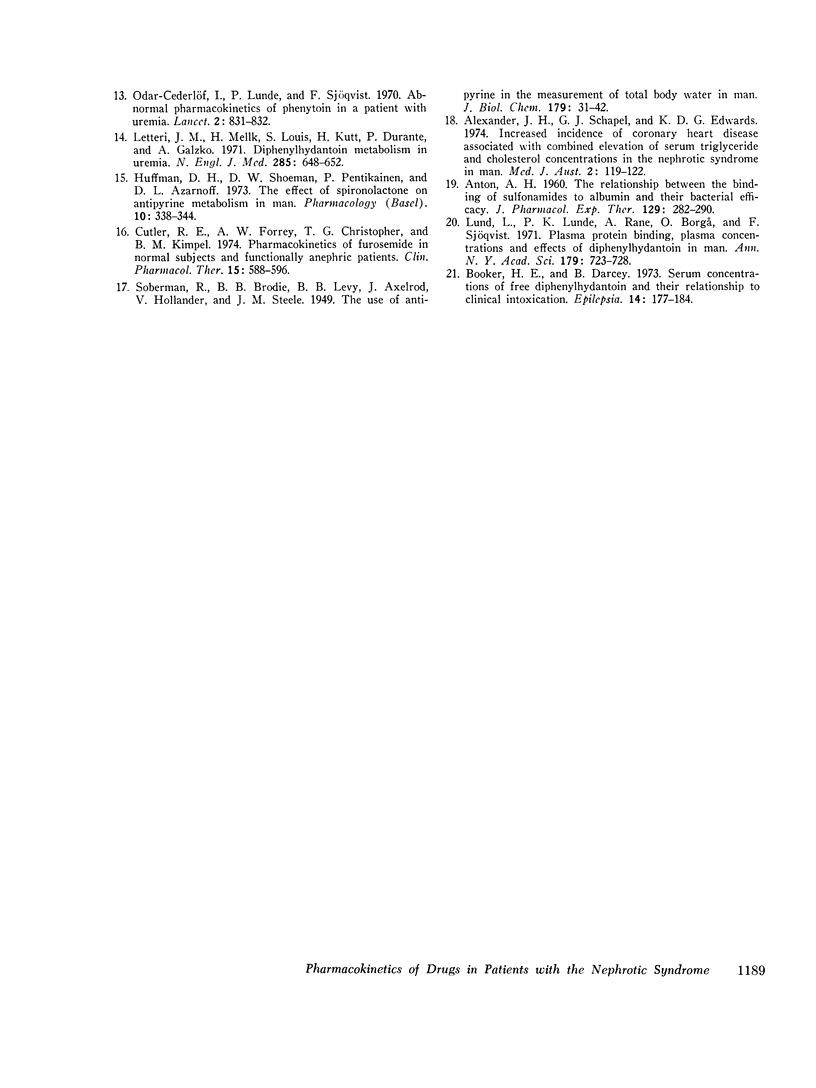
Selected References
These references are in PubMed. This may not be the complete list of references from this article.
- ANTON A. H. The relation between the binding of sulfonamides to albumin and their antibacterial efficacy. J Pharmacol Exp Ther. 1960 Jul;129:282–290. [PubMed] [Google Scholar]
- Alexander J. H., Schapel G. J., Edwards K. D. Increased incidence of coronary heart disease associated with combined elevation of serum triglyceride and cholesterol concentrations in the nephrotic syndrome in man. Med J Aust. 1974 Jul 27;2(4):119–122. doi: 10.5694/j.1326-5377.1974.tb93641.x. [DOI] [PubMed] [Google Scholar]
- Atkinson A. J., Jr, MacGee J., Strong J., Garteiz D., Gaffney T. E. Identification of 5-meta-hydroxyphenyl-5-phenylhydantoin as a metabolite of diphenylhydantoin. Biochem Pharmacol. 1970 Aug;19(8):2483–2491. doi: 10.1016/0006-2952(70)90274-1. [DOI] [PubMed] [Google Scholar]
- Booker H. E., Darcey B. Serum concentrations of free diphenylhydantoin and their relationship to clinical intoxication. Epilepsia. 1973 Jun;14(2):177–184. doi: 10.1111/j.1528-1157.1973.tb03954.x. [DOI] [PubMed] [Google Scholar]
- Bridgman J. F., Rosen S. M., Thorp J. M. Complications during clofibrate treatment of nephrotic-syndrome hyperlipoproteinaemia. Lancet. 1972 Sep 9;2(7776):506–509. doi: 10.1016/s0140-6736(72)91905-8. [DOI] [PubMed] [Google Scholar]
- Cook C. E., Kepler J. A., Christensen H. D. Antiserum to diphenylhydantoin: preparation and characterization. Res Commun Chem Pathol Pharmacol. 1973 May;5(3):767–774. [PubMed] [Google Scholar]
- Cutler R. E., Forrey A. W., Christopher T. G., Kimpel B. M. Pharmacokinetics of furosemide in normal subjects and functionally anephric patients. Clin Pharmacol Ther. 1974 Jun;15(6):588–596. doi: 10.1002/cpt1974156588. [DOI] [PubMed] [Google Scholar]
- Gillette J. R. Overview of drug-protein binding. Ann N Y Acad Sci. 1973 Nov 26;226:6–17. doi: 10.1111/j.1749-6632.1973.tb20464.x. [DOI] [PubMed] [Google Scholar]
- Huffman D. H., Shoeman D. W., Azarnoff D. L. Correlation of the plasma elimination of antipyrine and the appearance of 4-hydroxy antipyrine in the urine of man. Biochem Pharmacol. 1974 Jan 15;23(2):197–201. doi: 10.1016/0006-2952(74)90410-9. [DOI] [PubMed] [Google Scholar]
- Huffman D. H., Shoeman D. W., Pentikäinen P., Azarnoff D. L. The effect of spironolactone on antipyrine metabolism in man. Pharmacology. 1973;10(6):338–344. doi: 10.1159/000136455. [DOI] [PubMed] [Google Scholar]
- Letteri J. M., Mellk H., Louis S., Kutt H., Durante P., Glazko A. Diphenylhydantoin metabolism in uremia. N Engl J Med. 1971 Sep 16;285(12):648–652. doi: 10.1056/NEJM197109162851202. [DOI] [PubMed] [Google Scholar]
- Lund L., Lunde P. K., Rane A., Borga O., Sjöqvist F. Plasma protein binding, plasma concentrations, and effects of diphenylhydantoin in man. Ann N Y Acad Sci. 1971 Jul 6;179:723–728. doi: 10.1111/j.1749-6632.1971.tb46947.x. [DOI] [PubMed] [Google Scholar]
- Lunde P. K., Rane A., Yaffe S. J., Lund L., Sjöqvist F. Plasma protein binding of diphenylhydantoin in man. Interaction with other drugs and the effect of temperature and plasma dilution. Clin Pharmacol Ther. 1970 Nov-Dec;11(6):846–855. doi: 10.1002/cpt1970116846. [DOI] [PubMed] [Google Scholar]
- Odar-Cederlöf I., Lunde P., Sjöqvist F. Abnormal pharmacokinetics of phenytoin in a patient with uraemia. Lancet. 1970 Oct 17;2(7677):831–832. doi: 10.1016/s0140-6736(70)91506-0. [DOI] [PubMed] [Google Scholar]
- Prescott L. F., Adjepon-Yamoah K. K., Roberts E. Rapid gas-liquid chromatographic estimation of antipyrine in plasma. J Pharm Pharmacol. 1973 Mar;25(3):205–207. doi: 10.1111/j.2042-7158.1973.tb10625.x. [DOI] [PubMed] [Google Scholar]
- Reidenberg M. M., Affrime M. Influence of disease on binding of drugs to plasma proteins. Ann N Y Acad Sci. 1973 Nov 26;226:115–126. doi: 10.1111/j.1749-6632.1973.tb20474.x. [DOI] [PubMed] [Google Scholar]
- Reidenberg M. M., Odar-Cederlöf I., von Bahr C., Borgå O., Sjöqvist F. Protein binding of diphenylhydantoin and desmethylimipramine in plasma from patients with poor renal function. N Engl J Med. 1971 Jul 29;285(5):264–267. doi: 10.1056/NEJM197107292850506. [DOI] [PubMed] [Google Scholar]
- Shoeman D. W., Azarnoff D. L. The alteration of plasma proteins in uremia as reflected in their ability to bind digitoxin and diphenylhydantoin. Pharmacology. 1972;7(3):169–177. doi: 10.1159/000136286. [DOI] [PubMed] [Google Scholar]


